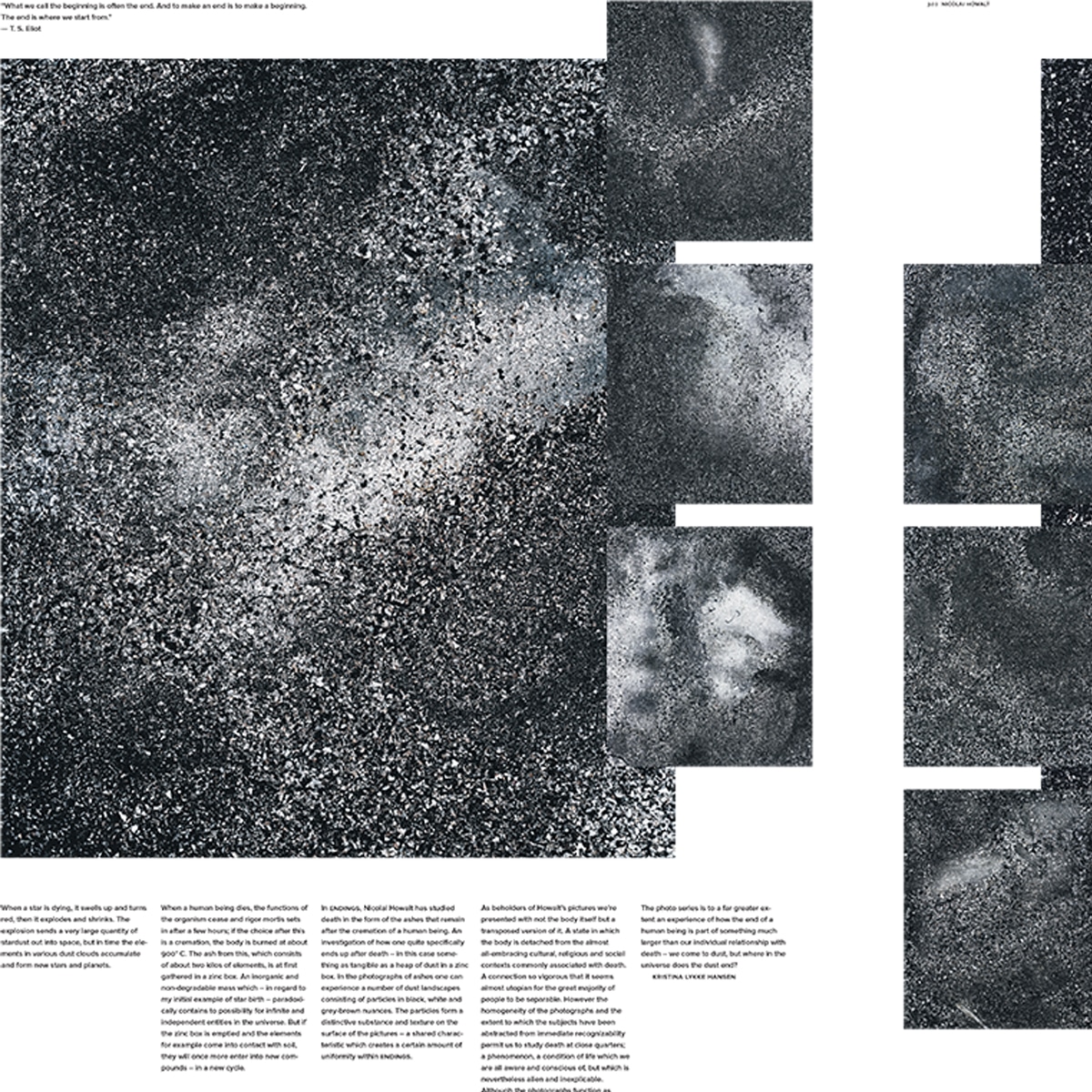From Ashes to Stars
- type: featured
- date: 17/07/12
- event: From Ashes to Stars
When a star is dying, it swells up and turns red, then it explodes and shrinks. The explosion sends a very large quantity of stardust out into space, but in time the elements in various dust clouds accumulate and form new stars and planets.
When a human being dies, the functions of the organism cease and rigor mortis sets in after a few hours; if the choice after this is a cremation, the body is burned at about 900° C. The ash from this, which consists of about two kilos of elements, is at first gathered in a zinc box. An inorganic and non-degradable mass which – in regard to my initial example of star birth – paradoxically contains to possibility for infinite and independent entities in the universe.
But if the zinc box is emptied and the elements for example come into contact with soil, they will once more enter into new compounds – in a new cycle. As beholders of Howalt’s pictures we’re presented with not the body itself but a transposed version of it. A state in which the body is detached from the almost all-embracing cultural, religious and social contexts commonly associated with death.
A connection so vigorous that it seems almost utopian for the great majority of people to be separable. However the homogeneity of the photographs and the extent to which the subjects have been abstracted from immediate recognizability permit us to study death at close quarters; a phenomenon, a condition of life which we are all aware and conscious of, but which is nevertheless alien and inexplicable. Although the photographs function as a study and an abstraction of death, the viewer is neither guided forward to a conclusion on what death is, nor to a sense of shock.
The trace of death has been observed and presented – not exposed and furnished with interpretative directional signals. In endings, Nicolai Howalt has studied death in the form of the ashes that remain after the cremation of a human being. An investigation of how one quite specifically ends up after death – in this case something as tangible as a heap of dust in a zinc box.
In the photographs of ashes one can experience a number of dust landscapes consisting of particles in black, white and grey-brown nuances. The particles form a distinctive substance and texture on the surface of the pictures – a shared characteristic which creates a certain amount of uniformity within endings.
The photo series is to a far greater extent an experience of how the end of a human being is part of something much larger than our individual relationship with death – we come to dust, but where in the universe does the dust end?
